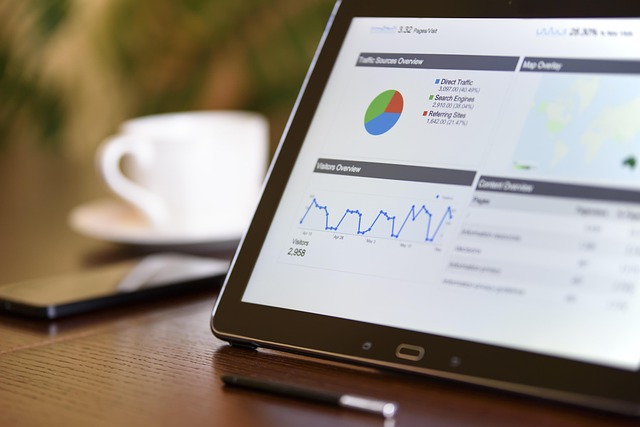TradingView Chart Review: An In-Depth Analysis of the Premier Trading Platform
Author: Jameson Richman Expert
Published On: 2025-09-20
Prepared by Jameson Richman and our team of experts with over a decade of experience in cryptocurrency and digital asset analysis. Learn more about us.
TradingView has cemented its position as an industry-leading platform in modern trading and investing, serving millions of traders, analysts, and investors across diverse markets globally. Its multifaceted ecosystem transcends traditional charting software by offering an integrated environment that combines sophisticated analytical tools, real-time data streaming, social engagement features, automated strategy development, and seamless broker integrations. This comprehensive approach not only enhances technical analysis but also fosters a collaborative community where ideas are exchanged, strategies are refined, and market insights are democratized. As TradingView continues to innovate—introducing new features, integrations, and scripting capabilities—understanding its core functionalities at a granular level becomes essential for traders aiming to maximize its potential. This in-depth review aims to explore TradingView’s platform architecture, advanced features, strategic applications, and integration capabilities across various asset classes—stocks, cryptocurrencies, forex, commodities, and indices—equipping users with actionable insights for effective deployment.

Understanding the TradingView Interface: Navigation and Customization
TradingView’s user interface strikes an elegant balance between sophistication and accessibility, designed to accommodate both novice traders and seasoned professionals. Its modular, grid-based layout can be extensively customized to suit individual preferences, enabling traders to create a personalized analytical environment optimized for their specific strategies. Upon login, users are greeted with the primary chart window, which supports real-time data streaming from multiple exchanges and markets, with support for an array of chart types—including candlestick, bar, area, line, Heikin-Ashi, Renko, Kagi, and Point & Figure charts—each offering unique insights into market behavior.
The top toolbar provides rapid access to essential functions such as drawing tools—trendlines, Fibonacci retracements, channels, pitchforks, and Gann fans—combined with a vast library of technical indicators. Users can swiftly toggle between different timeframes, ranging from seconds to monthly, to perform multi-scale analysis. The ability to overlay multiple indicators, create custom indicator combinations, and adjust parameters on the fly enhances analytical depth and pattern recognition. The interface supports multi-pane layouts, enabling the simultaneous viewing of multiple assets or timeframes, which is crucial for cross-asset or intermarket analysis.
The right sidebar consolidates alerts, watchlists, indicator settings, and social trading ideas into an accessible, collapsible menu, reducing workspace clutter while maintaining quick access. The bottom panel integrates real-time news feeds, economic calendars, and social commentaries—merging fundamental data with technical visuals to provide a comprehensive market perspective. Advanced users benefit from Pine Script, TradingView’s proprietary scripting language, which allows the creation of custom indicators, alerts, and automated trading strategies—empowering traders to tailor the platform to their unique analytical and trading needs.
Furthermore, TradingView’s cloud-based system facilitates creating multiple layouts and templates, saving preferred themes (dark or light), and sharing configurations across devices, ensuring consistency and flexibility across trading sessions. The platform also supports keyboard shortcuts and hotkeys, streamlining workflow for power users seeking rapid execution and analysis.
Key Features That Elevate TradingView Beyond Basic Charting
TradingView’s extensive feature set positions it far beyond a simple charting tool, making it suitable for a broad spectrum of trading styles—from discretionary technical traders to fully automated systematic traders. Here are some of its pivotal capabilities:
- Vibrant Social Trading Community: TradingView hosts an active, global community where traders publish, discuss, and critique ideas, trade setups, and technical analyses. The social layer fosters peer-to-peer learning, validation of trading hypotheses, and collaborative exploration of market trends. Users can follow top analysts, comment on published ideas, and participate in discussion threads—creating a dynamic ecosystem that accelerates skill acquisition and enhances market understanding.
- Multi-Timeframe and Multi-Asset Analysis: The platform’s ability to display multiple charts simultaneously—each with customizable timeframes and asset types—facilitates a comprehensive, multi-layered approach. For instance, traders can analyze long-term weekly trends alongside short-term intraday data, aligning strategic and tactical decisions and reducing conflicting signals.
- Extensive Indicator Library & Community Scripts: TradingView comes equipped with a rich library of built-in indicators—including Moving Averages, RSI, MACD, Bollinger Bands, Ichimoku Clouds, and Volume Profile—while its user community creates thousands of custom scripts. These community-developed indicators often incorporate innovative methodologies, combining multiple signals or adding unique filters, thus expanding analytical horizons.
- Backtesting & Strategy Optimization: The platform’s strategy tester allows traders to simulate trading strategies against historical data, providing detailed performance metrics such as total return, maximum drawdown, profit factor, and win rate. This feature is invaluable for validating ideas, detecting overfitting, and optimizing parameters before deploying live strategies, ultimately reducing risk and improving confidence.
- Real-Time Data & Intelligent Alerts: TradingView supports real-time market data from numerous exchanges and brokers, ensuring traders are responding to the latest market developments. Custom alerts—triggered by price levels, indicator crossovers, pattern formations, or custom script conditions—can be configured to notify traders via pop-up, email, or SMS, enabling rapid reactions to market volatility or breakouts.
Advanced Technical Analysis with Pine Script and Automation
Pine Script stands out as TradingView’s most powerful feature—transforming the platform into an automation and algorithmic trading powerhouse. It enables traders to develop custom indicators, signals, and automated strategies that respond to complex market conditions through straightforward scripting. For example, a trader might craft a script that combines Fibonacci retracements with RSI divergence, or develop a volatility oscillator tuned to detect breakout scenarios with enhanced precision.
While mastering Pine Script requires a learning curve, TradingView provides comprehensive documentation, tutorials, and a vibrant community forum, easing new users into script development. Shared scripts serve as valuable learning templates, allowing traders to adapt and refine strategies efficiently. Additionally, TradingView supports webhook integrations that connect custom alerts or scripts to external broker APIs and third-party automation platforms, facilitating near-real-time order execution and systematic trading.
This automation capability benefits systematic traders by ensuring disciplined, emotion-free execution. It allows for 24/7 trading when connected to compatible broker APIs, which is particularly advantageous in cryptocurrency markets, where 24/7 operations are standard. Advanced users can develop multi-condition strategies with complex logical structures, optimizing parameters for different market regimes and personal risk tolerances, thus turning TradingView into a full-fledged quantitative trading environment.

Integrating TradingView with Broader Trading Ecosystems
Though TradingView’s primary strength lies in its analytical and social features, its integrations with brokerages significantly extend its operational scope. Direct integration with brokers such as Binance, Coinbase, Interactive Brokers, FXCM, and OANDA enables traders to execute orders directly from the chart interface—streamlining workflows and reducing latency. This connectivity is especially critical in high-frequency or high-volatility environments.
For cryptocurrency traders, real-time synchronization with exchanges like Binance, Kraken, and MEXC allows for instant order placement, portfolio management, and position tracking—all within a single environment. This reduces manual errors, accelerates trade execution, and enhances overall efficiency—particularly during volatile market swings.
Forex and stock traders also benefit from these integrations, which facilitate rapid order execution, position management, and automated trade deployment. Many brokers support APIs and webhook functionalities, allowing traders to execute complex systematic strategies seamlessly. Furthermore, broker referral programs often provide discounts, bonuses, or cashback incentives—additional motivators to leverage TradingView’s integrated trading capabilities.
Beyond direct trading, TradingView’s open ecosystem encourages the development of custom add-ons—such as trading bots, portfolio analyzers, and risk management tools—further expanding its versatility within comprehensive trading setups. Integration with third-party risk management platforms enables traders to implement robust stop-loss/take-profit strategies, position size calculators, and portfolio diversification tools.
Pro Tips for Maximizing TradingView’s Potential
Harnessing TradingView’s full suite of features requires disciplined practice, ongoing education, and strategic planning. Here are advanced tips to elevate your trading workflow:
- Establish a Consistent Analytical Routine: Develop a disciplined schedule—daily or weekly—to review key charts, update watchlists, and refine indicator configurations. Regular analysis sharpens pattern recognition, helps track evolving trends, and reduces impulsive decision-making.
- Optimize Indicator Combinations: Use complementary tools—such as trend-following moving averages (EMA, SuperTrend) paired with momentum oscillators (RSI, Stochastics)—to generate more reliable signals. Avoid indicator overload; instead, focus on a narrow set of high-quality indicators that confirm each other’s signals.
- Leverage Alerts & Automation Strategically: Place layered alerts at critical levels—breakouts, pullbacks, or divergence points—and pair these with custom Pine Script triggers for automated order placement. This layered approach ensures timely responses and minimizes emotional biases during volatile periods.
- Engage Actively with the Community Content: Participate in discussion threads, share your setups, and analyze others’ ideas—this exposure accelerates learning, exposes you to diverse strategies, and sparks innovative thinking.
- Rigorously Backtest & Validate: Use the strategy tester to simulate various market scenarios, adjusting parameters for robustness. Maintain detailed logs of testing outcomes to refine your approach iteratively and avoid overfitting to specific data sets.
- Stay Updated & Continuously Educate: Keep abreast of new platform features, technical analysis techniques, and community insights through webinars, tutorials, and official platform updates. Continuous learning translates into better adaptability and more informed decision-making.
Conclusion: Is TradingView the Right Platform for You?
From a practical perspective, TradingView’s expansive feature set—covering advanced charting, social engagement, scripting, and automation—positions it as a formidable tool for traders across all experience levels. Its ability to merge technical analysis with collaborative insights and automated workflows creates an environment conducive to disciplined, data-driven trading strategies.
Nevertheless, success depends heavily on your commitment to continuous learning, strategic planning, and emotional discipline. TradingView provides the tools; your ability to craft, test, and execute effective strategies determines your trading journey’s ultimate outcome. Investing time in mastering its advanced features and integrating them into a systematic workflow can significantly enhance trading efficiency, consistency, and confidence.
Whether analyzing cryptocurrency markets through Binance, executing forex trades via OANDA, or managing stocks with Interactive Brokers, TradingView offers a unified, powerful platform for informed and timely market engagement. Remember: disciplined practice, ongoing education, and strategic adaptation are essential to thrive in dynamic markets. Embrace TradingView’s capabilities, refine your approach, and elevate your trading mastery—happy trading!